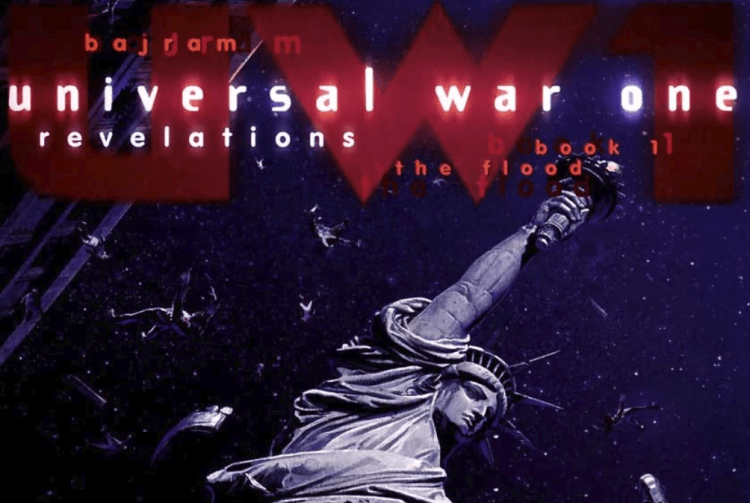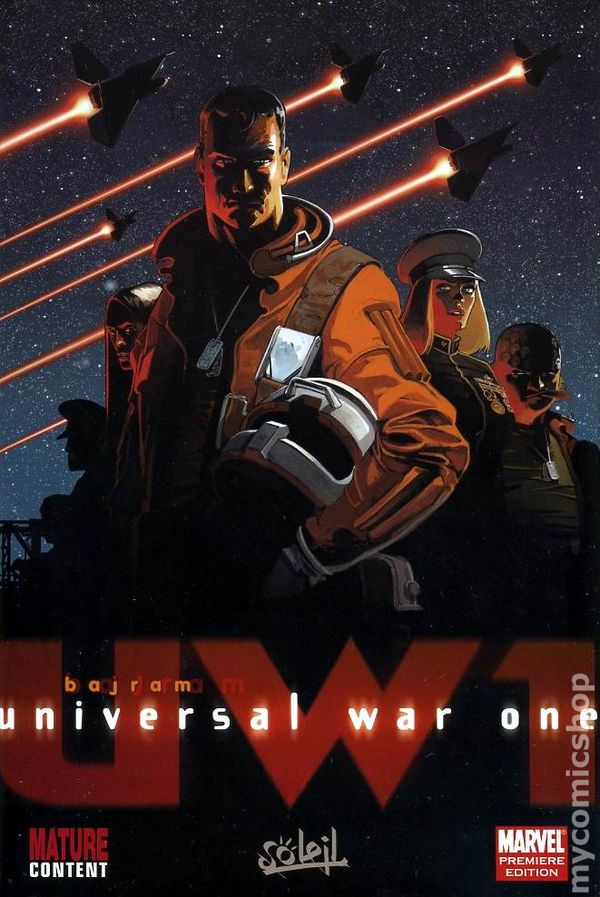
Welcome to the Comic Archive! There have been so many amazing stories, characters, and series produced from comic book publishers for almost 100 years now; this column will serve to celebrate some of the tales you may or may not know about. Each week, we’ll take a story arc or trade paperback/collected story from a non-new comic (three years old or further back), and discuss the details with you.
 Some of the best comic-book tales out there sometimes have a strange journey to get into consumers’ hands. Such is the case with ‘Universal War One’ (‘UW1’ for short), a mini-series originally released by French publisher Soleil in the 1990s. Originally available only in Europe (and in the original French language), here in the US in the mid-2000s Marvel Comics fortuitously struck a deal to translate and reprint some original Soleil works, and UW1 got the American-release treatment as a 3-issue mini-series in 2008.
Some of the best comic-book tales out there sometimes have a strange journey to get into consumers’ hands. Such is the case with ‘Universal War One’ (‘UW1’ for short), a mini-series originally released by French publisher Soleil in the 1990s. Originally available only in Europe (and in the original French language), here in the US in the mid-2000s Marvel Comics fortuitously struck a deal to translate and reprint some original Soleil works, and UW1 got the American-release treatment as a 3-issue mini-series in 2008.
Each of the three issues is double-sized at 56 pages, providing quite a lot of story to what may initially sound like a small series. The writer/artist of the series, Denis Bajram, has also created a follow-up to this original ‘UW1’ tale, another mini-series, entitled ‘Universal War One: Revelations.’ Bajram has previously announced that the saga will continue with future series ‘Universal War Two’ and ‘Universal War Three,’ but further news on these sequels remains hazy at this time.
As for the story itself: this is science fiction in a very pure form. Taking place at the very tail end of the 21st Century, humanity has expanded our colonization reach into the solar system, with space stations, fleets of space-faring vessels, and other physical facilities scattered from Venus from Neptune. Most commodities are under the control of a centralized power, The United Earth Central Government and its military presence, the United Earth Force. Only one group, the Colonization Industrial Companies, seems to be large enough to have any sort of presence as a “checks-and-balances” type of existence to keep the government from operating unchecked.
Aboard the UEF’s Third Fleet operating near Saturn, the Purgatory Squadron has gotten themselves into quite the adventure. The group is comprised of officers and pilots who all have made mistakes during their time of service, but have been brought together to handle the missions that may be too extreme or dangerous for everyone else. Their number is called when a gargantuan black wall suddenly cuts the solar system in two, appearing just outside of Saturn’s orbit and cutting off any communication with the outlying planets and facilities.
‘UW1’ follows the Purgatory Squadron in duality: half of the story is centered on the individual members and the ghosts they carry with them, and the other half is focused on the scientific crisis at hand, which ends up having fantastic origins and repercussions that no one could have predicted. The two pieces are mixed together very effectively, giving the reader both a significant amount of character development and some serious large-scale sci-fi action. Oh, and there are a good amount of pew-pew-laser-fire space battles thrown in for good measure as well.
 It’s very difficult to talk about the specifics of the plot beyond what I’ve already outlined without essentially spoiling the big reveals of the tale, so I won’t do that to you. Several of the major plot points – humanity’s colonization of the solar system, different factions vying for control of the different planets, etc. – have been done in sci-fi before, of course, and will be done by other tales as well. Most notably in recent popular sci-fi fare, ‘UW1’ bears some similarities to the book and television series ‘The Expanse.’ They are different enough, however, to avoid any questions of copycatting (but for the record, ‘UW1’ began its release in the 1990s, and ‘The Expanse’ series didn’t see the public eye until 2011).
It’s very difficult to talk about the specifics of the plot beyond what I’ve already outlined without essentially spoiling the big reveals of the tale, so I won’t do that to you. Several of the major plot points – humanity’s colonization of the solar system, different factions vying for control of the different planets, etc. – have been done in sci-fi before, of course, and will be done by other tales as well. Most notably in recent popular sci-fi fare, ‘UW1’ bears some similarities to the book and television series ‘The Expanse.’ They are different enough, however, to avoid any questions of copycatting (but for the record, ‘UW1’ began its release in the 1990s, and ‘The Expanse’ series didn’t see the public eye until 2011).
Bajram has created an immersive universe here, and it’s one that I can recommend confidently to readers who enjoy a heavy dose of science-fiction in their comics. Since this is a European production, there are some noticeable differences from American fare: each panel is densely populated with lots of information both in text and visually, so prepare to spend some time reading and taking a good look at everything; also, the character development is excellent but in many cases the plot and character details are not as plainly “spelled out” as they are in the average publication created for the US market.
All in all, ‘Universal War One’ is a great bit of sci-fi that the “average consumer” may not know exists, and one that is worth the effort to seek out. The series is available digitally via Comixology, but only in the original French translation; you may have to check out your local comic store to see if you can find either the individual Marvel/Soleil issues or one of the collected trade paperbacks.
Got a comic, character, or story arc that you’d like to see covered by the Comic Archive? Feel free to list it in the Comments below or send your recommendation directly to me at tony@tonyschaab.com – see you in the funny papers!
